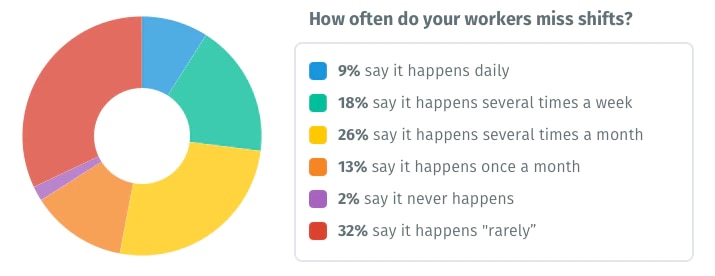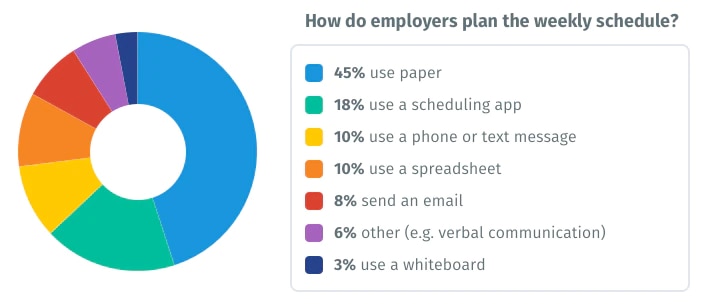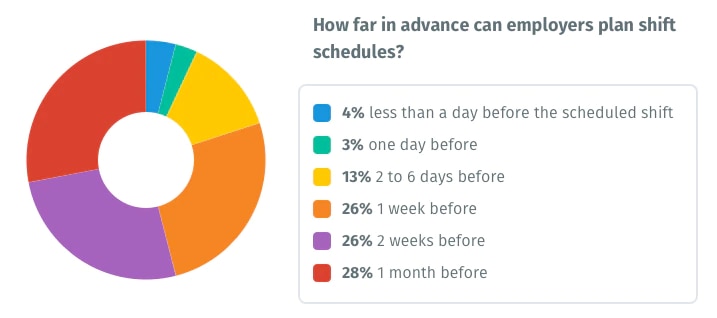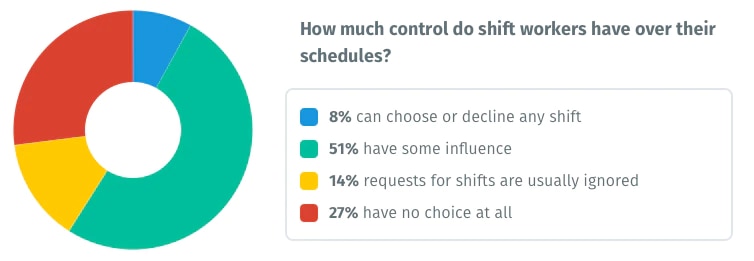Shift Scheduling Challenges for Employees and How to Overcome Them
The top 5 challenges facing employees who work in shifts
- Pursuing hobbies
- Seeing friends
- Exercising
- Eating well
- Sleeping well
Shift scheduling causes employees to lose sleep and over 7% of their annual earnings
Many shift workers find it difficult to strike a balance between work and life. Working on-call, back-to-back shifts (also known as “clopens”) leaves little time for things like pursuing hobbies, eating well-balanced meals, and having a social life.
Only 36 percent of employees who work rotating shifts say they have a shift pattern that rotates forward (morning, afternoon, night), the least hazardous shift pattern for employee health. But our survey shows that shift work costs employees much more than sleep. It also costs them their hard-earned money — about $1,100 each year.
Our survey found canceled shifts and last-minute schedule changes cost shift workers an average $92 per month in lost income and additional expenses (including travel costs, childcare, and missed payments). That adds up to about 7 percent of a minimum wage worker’s annual salary.
Last-minute shift changes are common — should employees be compensated?
Over half of shift workers (about 60 percent) say they’ve had a shift canceled at the last minute. About 40 percent of them were notified of the canceled shift the night before. The other 48 percent were notified either on their way to work or after they arrived.
However, these workers have one thing in common: Over 95 percent believe they’re entitled to compensation for canceled shifts. And here’s why:
Nearly 1 in 6 employees admits to missing an important payment due to a canceled shift (and losing six to eight hours, or more, of income). Another 1 in 4 says they’ve wasted time and money commuting to work for a canceled shift or paid for unnecessary childcare.
On the flip side, 20 percent of employees have had to shell out for last-minute childcare after being called into work at the last minute. And yet, less than 37 percent of employees are compensated for their time when their schedules are changed. Those who are compensated for their canceled shifts are paid just $22 per shift, on average.
Only 50% of shift workers get their schedule two weeks in advance
Only 45 percent of employees say they get enough notice for their schedules from their employer. Twelve percent say they rarely get enough notice, and 5 percent admit they never get the notice they need to plan their week.
And it comes as no surprise. According to our research, only 1 in 2 employees gets their schedules two weeks in advance. Another 1 in 4 receives their schedules one week out, and 8 percent get just one day’s notice or less.



